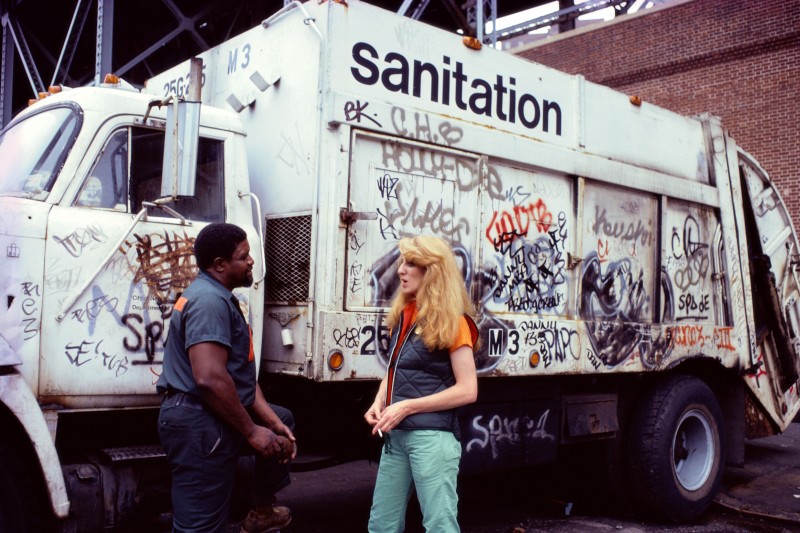
Did you know that the New York City’s Department of Sanitation (DSNY) had an artist in residence for 40 years? Mierle Laderman Ukeles: Maintenance Art, the newest exhibition at the Queens Museum of Art is a celebration of Ukele’s tenure there documenting the seemingly mundane work of maintenance workers in provocative ways.
Halfway through the media preview tour, a woman trailing behind jokingly quipped about how much there was to see. Eyeing the sheer size of the exhibition, it’s understandable why someone would need more than a couple of minutes in each room.
Within the space, a survey of Ukeles’ 50-year long career is displayed: photographs are hung on the walls in a grid-like fashion; historic documents are kept behind glass display boxes and eye-catching sculptures stand center-stage. It is the first show that utilizes all the temporary exhibition space inside the Queens Museum of Art, and the most significant presentation of Ukeles’ work ever assembled in one location.
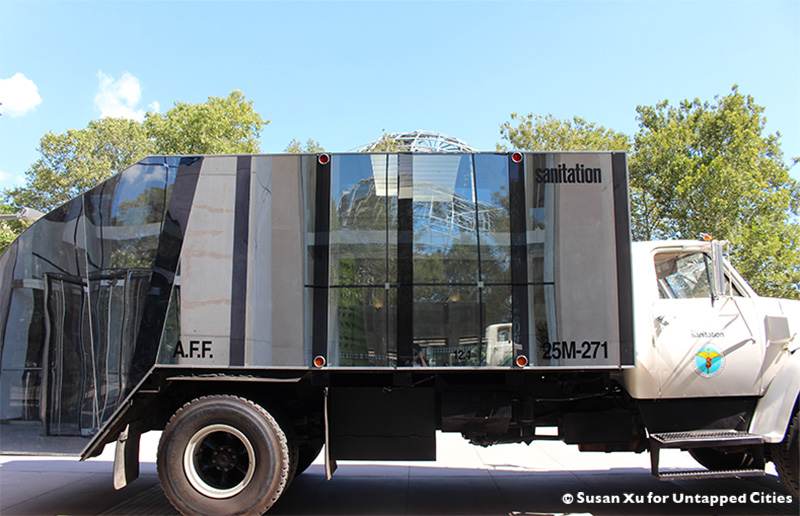
Prior to the start of the media preview, Ukeles, during a short, yet profound speech, pointed to a sanitation truck parked right in front of the entrance to the museum. It is fitted for the exhibition with mirrors and behind it, the world-famous Unisphere from the 1964 World’s Fair can be seen, spraying jets of water into the air.
It allows people – and most importantly, sanitation workers – to see the work they are doing; it suggests openness and inclusion. With her arms extended outwards, almost as if to embrace the press, Ukeles explained these themes and her intentions as an artist while standing behind a podium.
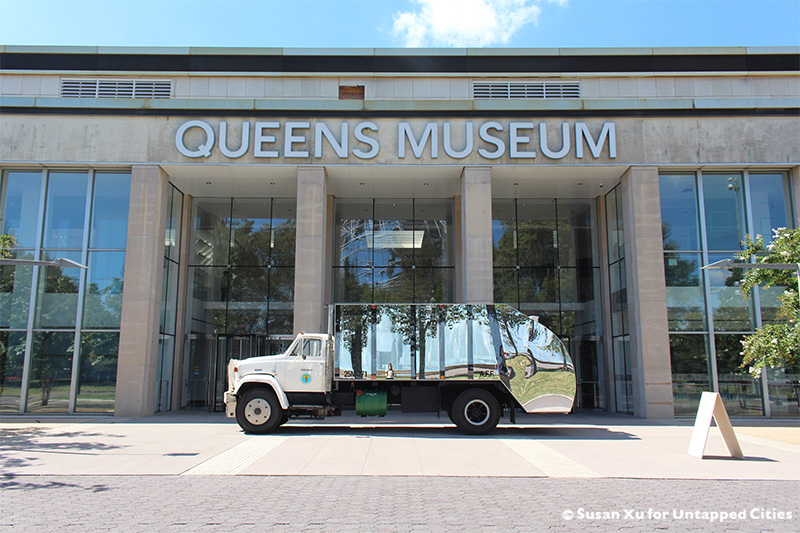
Since the 1960s, Mierle Laderman Ukeles’ artwork has addressed some of the most complex societal issues today, including feminism, environmental justice and cultures of work and labor. Not only does it encourage people to think critically and creatively, it also serves as a “guidestar” for the next generation of artists to work in a socially engaged way.
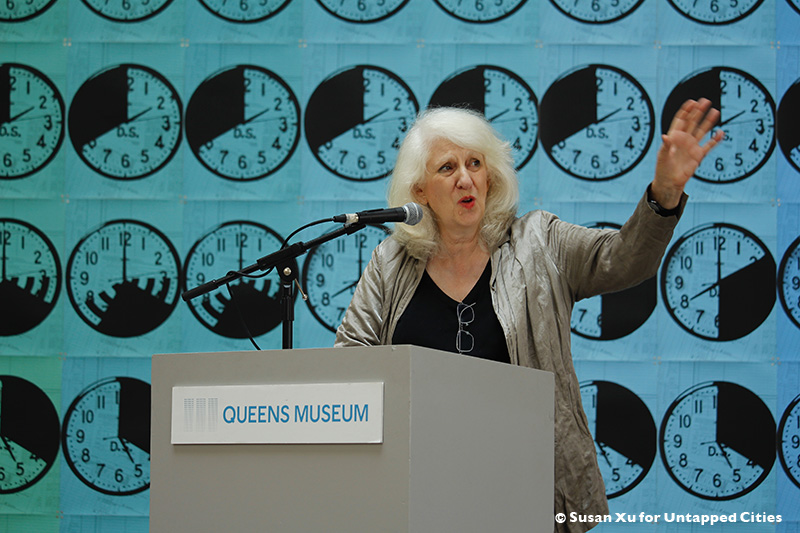
Openness as a theme can easily be felt throughout her pieces, as well as the physical space itself. Upon entering the Queens Museum of Art, visitors will walk into a wide expanse, lit up, in part, by natural sunlight flooding in from skylights on the ceiling – architectural elements part of the $68 million renovation, completed in 2013.
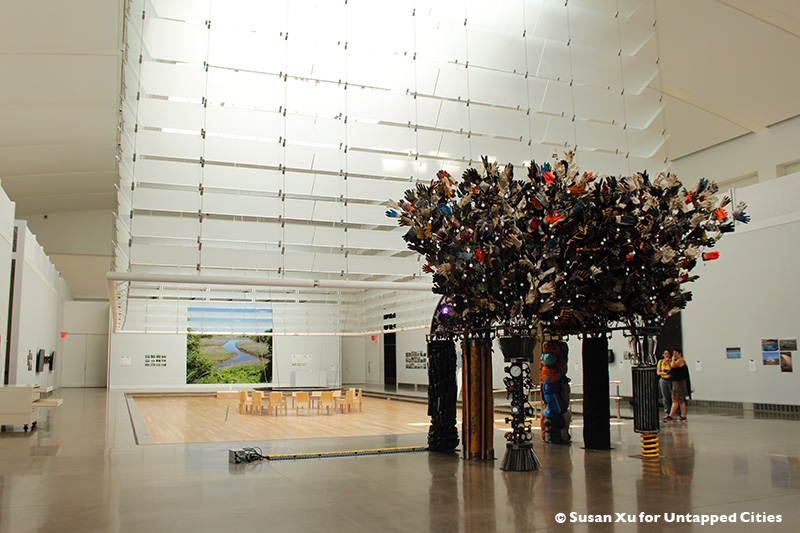
An archway, made of city agency workers’ gloves (MTA, ConEdison, etc.) and odd parts of tools, invites visitors to walk through it, and over onto an open floor space, which holds a suspended table and chairs arranged into a circle. The “Peace Table,” as it is called, will be the site of several public programs that will take place over the course of the exhibition, including four, three-hour roundtable conversations with activists, artists, city workers and other experts.
The exhibition showcases Ukeles work from 1962-2016, covering her career as a feminist performance artist, as well as her 40-years at the New York City’s Department of Sanitation (DSNY). The main body of work, inspired by her four-page manifesto, can be found within the temporary exhibition spaces. In it, she writes about two basic systems of Western culture: Development (“pure individual creation”) and Maintenance (“keep the dust off the pure individual creation”). According to Ukeles, “Maintenance is a drag; it takes all the fucking time,” yet it’s still gravely undervalued.
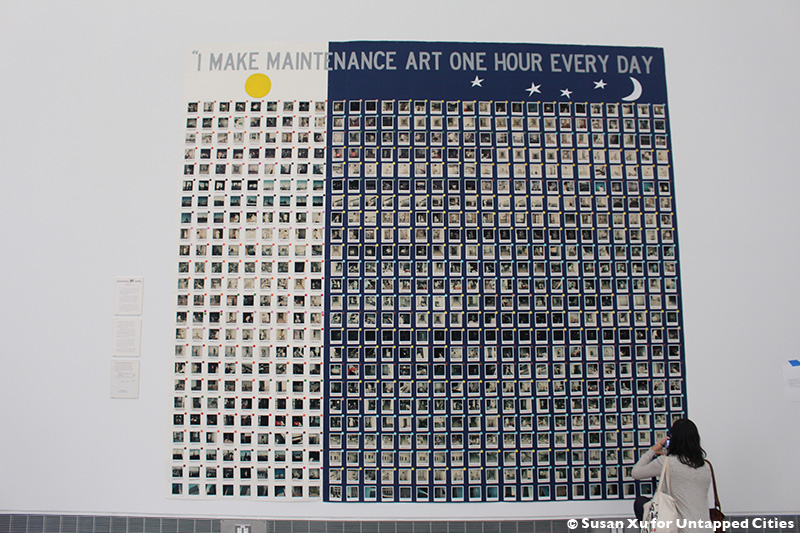
Ukeles considered her work to be part of the first category until she gave birth to her first child. As an artist, woman, mother and wife, who also happened to do a “hell of a lot of washing, cleaning, cooking,” etc., she suddenly found herself identifying with the second category. Instead of accepting this, she began to view Maintenance as an art form, and herself as a “Maintenance Artist.”
“I didn’t want to be two separate people – the maintenance worker and the free artist – living in one body,” she stated.
Thus, her manifesto was a call to action. It challenged people to value Maintenance and question Development. It was a feminist statement, yet it simultaneously facilitated an alliance with men who maintain.
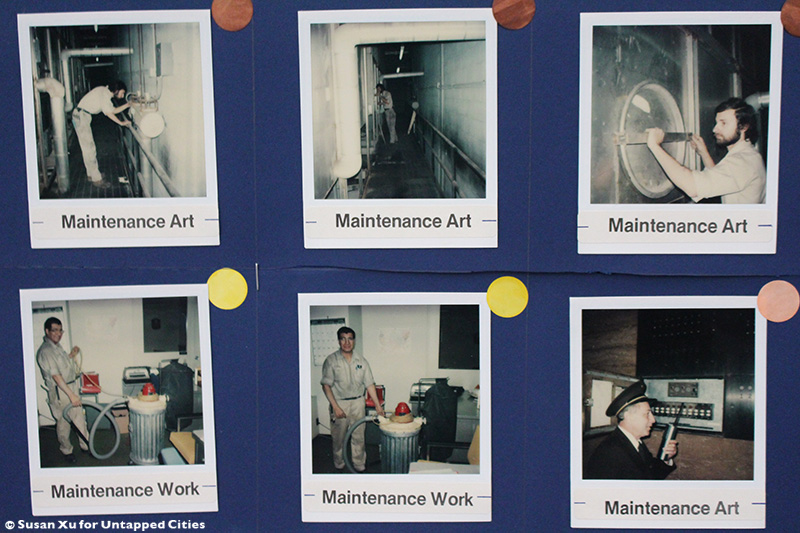
Take, for example, Ukeles’ Touch Sanitation Performance, showcased in Gallery 6A. In putting together the piece, she set out to shake the hand of all 8,500 New York City Sanitation workers (sanmen) to personally thank them for their service. The process took eleven months, and Ukeles’ route, which was organized into ten “Sweeps” that divided New York’s 59 Sanitation districts, is illuminated in the Queens Museum’s Panorama of the City of New York.
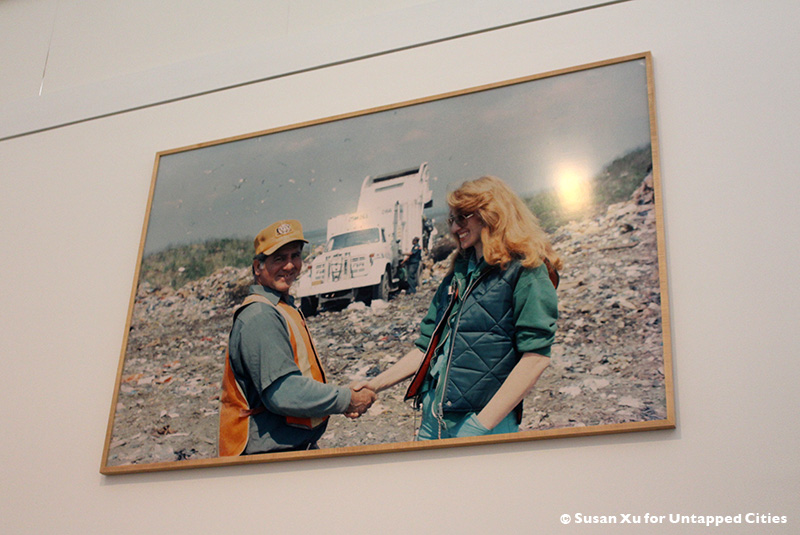
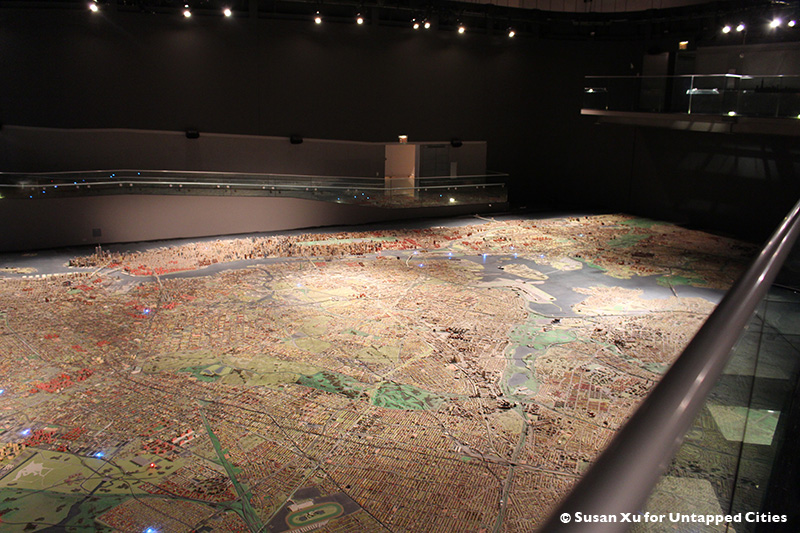
Queens Museum’s Panorama of the City of New York.
There is an element of playfulness in Ukeles’ work too. As a museum patron, speaking with Larissa Harris, the curator of the exhibit, pointed out, “the work is unending, so you need a sense of humor.” For the several of the participants, the statement could not ring more true. As they all shook their heads in agreement, two real-life DSNY workers – as if on cue – stepped into the room to see the exhibition.
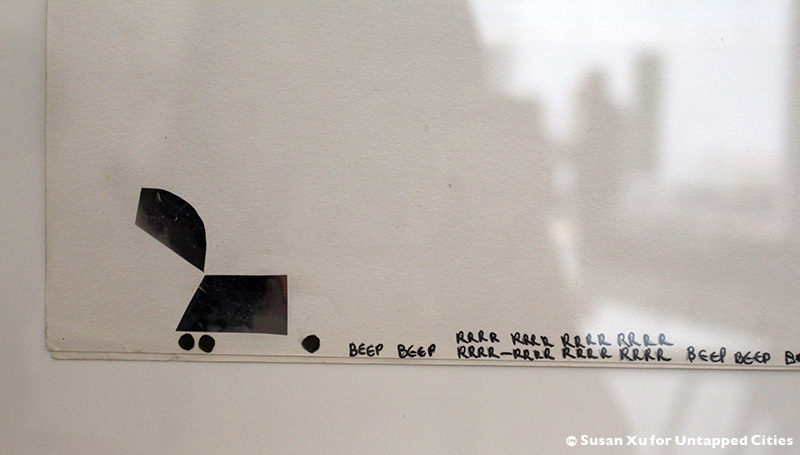
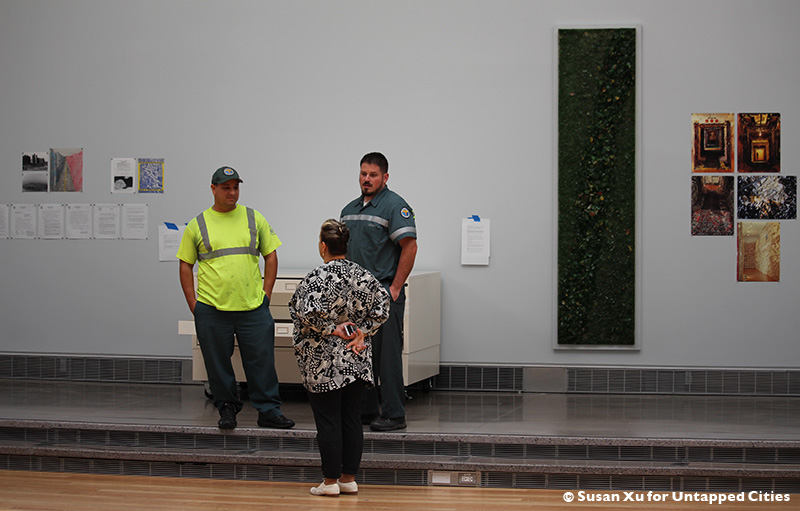
The visual images seemed to resonate with the workers, who smiled as they casually strolled through the rooms. Although Ukeles wasn’t around to witness it for herself, the reaction must have been something she looked forward to seeing every day over the course of her five-decade long career. Most artist only ever hope to extract the same response from an audience.
Mierle Laderman Ukeles: Maintenance Art is on exhibit at the Queens Museum of Art from September 18, 2016 – February 19, 2017.
Next, check out secret gallery inside a Department of Sanitation garage and The Top 10 Secrets of NYC’s Department of Sanitation. Keep up with the author @heysuehey.





